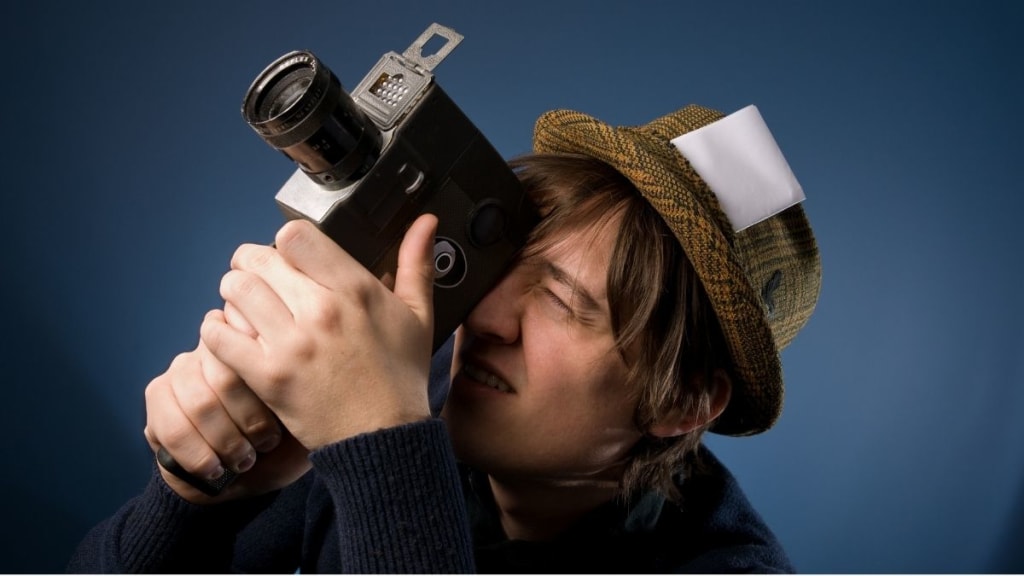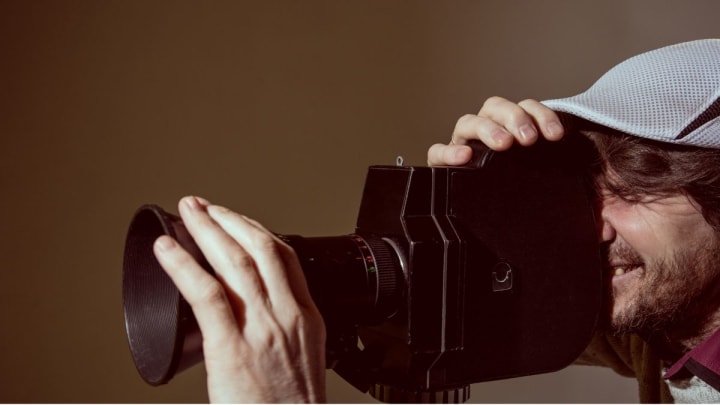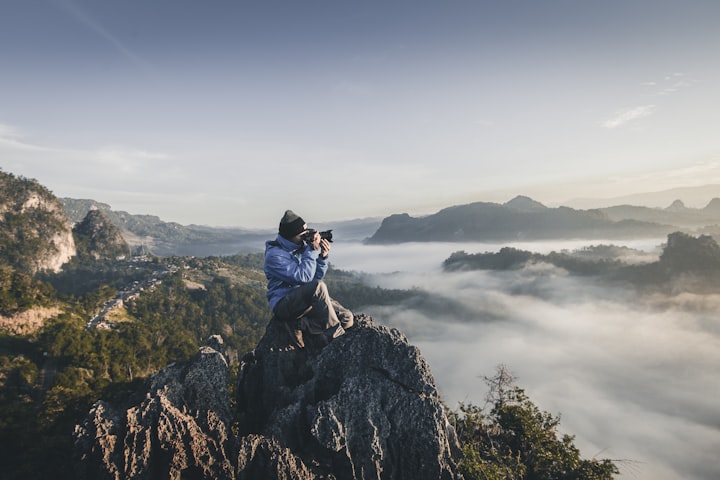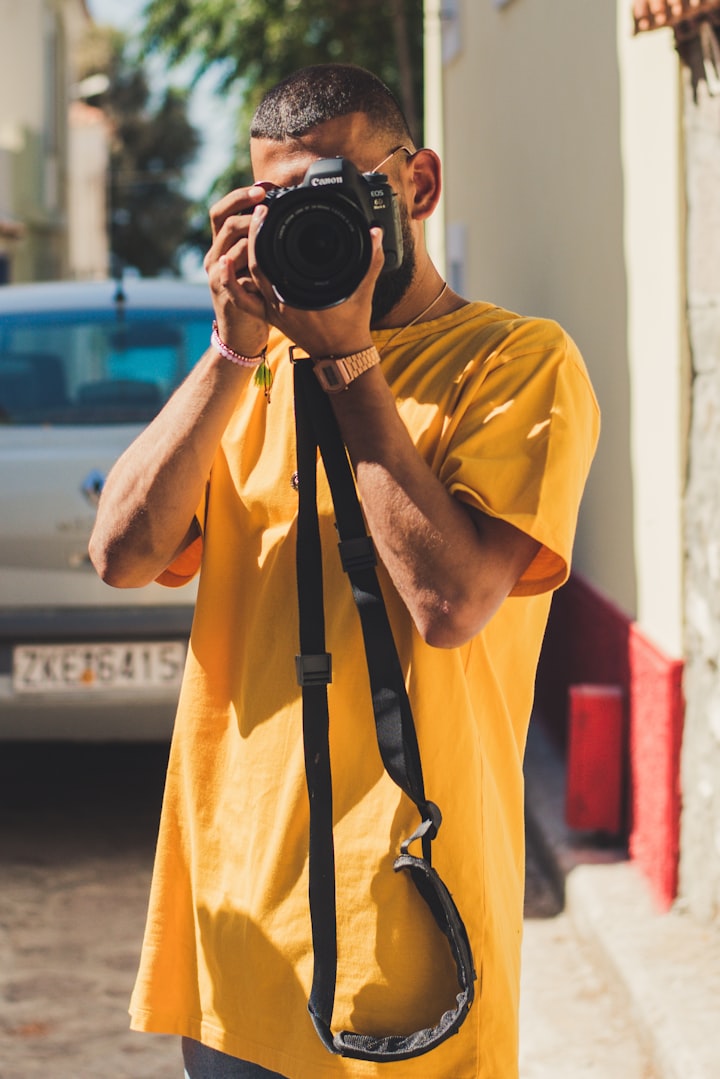7 Tips To Make Movies Like A Pro
Become a professional movie maker

Want to become a professional movie maker? Learn how to make movies like a pro with these filmmaking tips and filmmaking courses for beginners.
Filmmaking is an important art form, a source of popular entertainment and a powerful method for entertaining and educating people.
To make your own movies requires a level of competence and artistic know-how as well as good videography. There’s more to shooting great footage than pressing the record button.
You can learn how to make movies and study the art of filmmaking with the best online filmmaking courses by the best filmmakers of all time.
Here are some tips to create movies and make a film, whether you’re using a handheld video camera or a movie creator app on your phone.
1. Be a good student
Just like any craft you need to know your tools. For example, if you're filming your son’s baseball game you need to increase the shutter speed to ensure your image is free of motion blur.
If you’re shooting from a distance and you’ve zoomed to bring the subject closer you’ll need to pay attention to the camera’s focus and switch it to manual to avoid focus drift. It really comes down to reading the manual and learning the tools.
At first, it may seem daunting but if you tackle one concept at a time and apply yourself by shooting it will make sense and it will become second nature. To simplify things, keep a cheat sheet handy.
2. Stay prepared
If you want to become a full-time filmmaker, you need to think of videography like camping — you always need a survival kit. Here are some things to include in your movie maker kit.
• Bring plenty of spare batteries — you never know when you’ll need them.
• Extra blank tapes. The more quality footage you have the easier the editing process.
• A lens-cleaning cloth. You don’t want to be stuck in a situation where you have a smudge and you have nothing safe to clean your glass with. This is a situation where post-production will not help.
• Bring a tripod. Steady shots go a long way in preventing motion sickness. You’ll be surprised how much better your shots will look.
• A battery charger or power supply. Having the ability to charge your batteries ensures minimal downtime and more content.
• Extension cords for long cable runs. You want to be prepared for the worst scenario. Often on jobs, I’ll bust out the cables if a local receptacle is not available.
• Duct tape, for taping down the extension cord so people don’t trip over it. You don’t want a lawsuit on your hands.
• Lighting gear, lens filters, and microphones, and any other accessories you may need.
These are your tools for quality videography. Unless you’re feeling lazy, don’t leave home without them.
3. Say YES to a tripod
The majority of home videos end up looking shaky, which is a drag to watch. Even with a small investment of $30 on a tripod, your footage look will look professional and steady. Also, you’ll have the ability to execute pans and zooms without trouble.
No tripod? Lean against a wall to minimize shakiness. OK, no wall you say? Putt your butt on the ground, bend your knees, and drop your elbows on them.
If you’re shooting an event where space is limited or you’re on the constant go I recommend a monopod. These are real lifesavers. Not only can you get rock steady shots, but you also occupy less space and can relocate in a matter of seconds.
4. Give me light
It doesn’t matter how good your camera is. If you have crappy lighting, it will reflect (no pun intended) in your video. A quick solution to overcome lighting issues is to shoot outdoors preferably in the morning or late afternoon hours.
Why? At these times of the day the light is less harsh and produces a more pleasant softer look on the video — no shadows over the eyes, squinting, or washed out skin tones.
If you must shoot indoors take notice of which way the light is directed in the room. Avoid shooting your foreground subjects close to bright windows behind them.
You don't want your camera to expose the background leaving your foreground subject dark. Certainly, let as much light into the room as possible and try to have the light coming from behind you towards your subject.
If the light levels are low, it's good practice to disable autofocus or you will encounter problems as the camera attempts to focus properly.

5. Hi-fi audio
Many people don't notice good sound but they sure notice poor quality audio. Getting good sound does take some work but it's doable. The microphones built in to most cameras are pretty basic and are not considered high-end.
When you’re dealing with an uncontrollable environment, it’s always best to get as close as possible to the source to ensure the cleanest recording. You must monitor your audio with headphones to ensure the best results.
6. Composition
Proper composition is everything when setting up a good shot. Professional videographers obey the “rule of thirds” and you should do the same.
Imagine a tic-tac-toe board over your viewfinder. The lines interact in four spots. Your goal should be to frame the action using one or more of those spots.
Of course, art is subjective and you can break this rule if you’re feeling creative. But exercise restraint: you don’t want to alienate your audience.
7. Shoot B-Roll
B-Roll is secondary footage that is used for cutaway shots to connect your primary shot. The cutaway of b-roll footage can also be used to hide unflattering shots or mistakes you may have made while shooting.
If you’re filming a wedding, you might take shots of the church, the invitation, and the little bride and groom atop the cake. When it’s time to cut your movie, you mix in the footage to cover up mistakes and add variety.
There are no hard rules. Anything can become B-Roll. If you study television shows or news stories you’ll see a constant use of B-Roll. It’s basically the glue to connect and link scenes together.
As you gain experience you will be able to visualize your edit and what shots you need before you even shoot. As the old saying goes, practice makes perfect.
Find out how to get access to film directing courses from the best directors of all time at a much lower cost than joining an expensive film academy.
About the Creator
Priya Florence Shah
Priya Florence Shah is a bestselling author, award-winning publisher and online branding consultant.






Comments
There are no comments for this story
Be the first to respond and start the conversation.